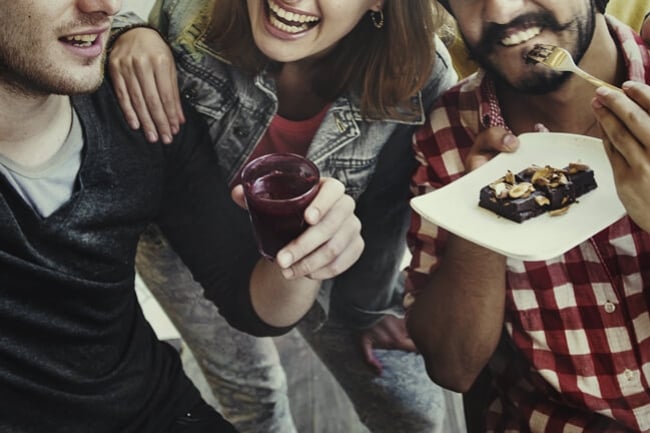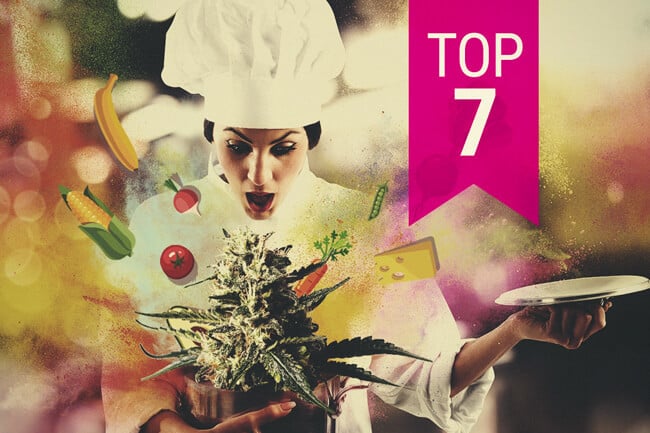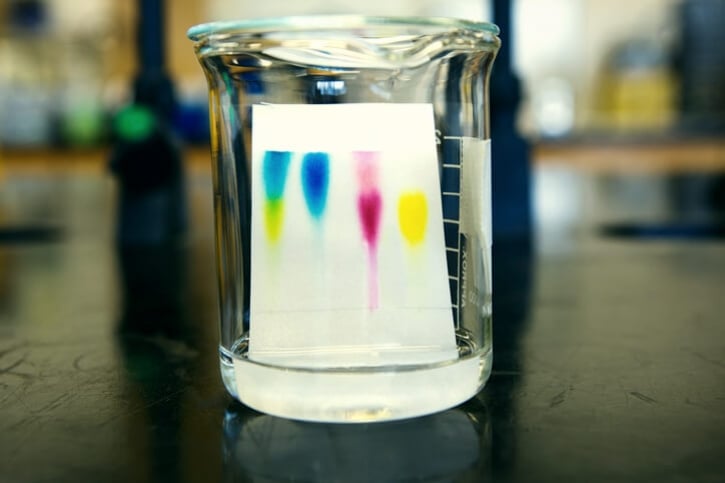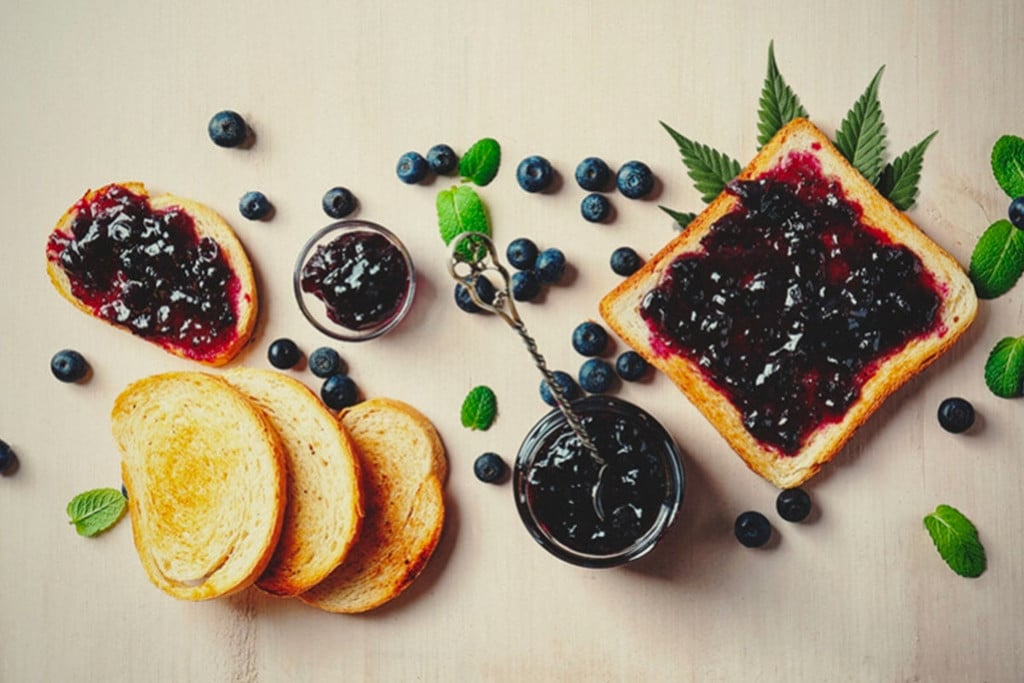.
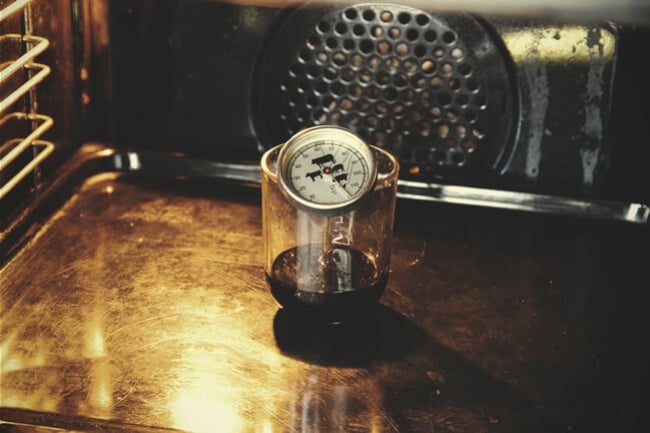
Why Decarboxylating Your Cannabis Is So Important
Decarboxylation may sound complicated but chances are you've already experienced it. Put simply, it means heating your cannabis and is the only way to ensure you're getting the most from your edibles.
Contents:
The phytochemicals present in raw cannabis are very different from those found in the smoke after you set your buds ablaze. If we told you that eating a bag of raw cannabis flowers wouldn't get you high, would you believe us?
The truth is, raw cannabis doesn’t contain psychotropic molecules; or, rather, it contains extremely low levels of them. Instead, those fresh, sticky buds are rich in precursor chemicals known as cannabinoid acids.
It takes a heat-driven molecular reaction—known as decarboxylation—to convert the non-psychotropic cannabinoid acids into the cannabinoids we know and love.
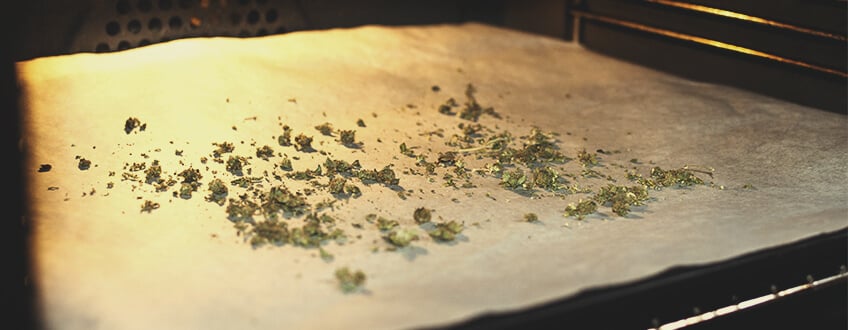
Continue reading to learn all about decarboxylation. You’ll discover the exact mechanism involved, how to decarb your own flowers, and why you should also decarb CBD-rich strains.
Decarboxylation: What Is It?
The word decarboxylation sounds like some complex term you probably forgot from chemistry class. Despite the way it sounds, it actually describes a super simple chemical process that underpins the cannabis experience.
Falling in love with cannabis often revives the love of science in many smokers and growers. Harness your passion for weed and get ready to learn exactly what happens when you apply a flame to your homegrown buds.
-
What Are Cannabinoid Acids?
When taking a closer look at your buds, you’ve probably noticed a layer of small, crystalline structures. These structures—known as trichomes—work overtime to pump out a resin filled with cannabinoid acids such as THCA and CBDA.
As cannabis science continues to progress, researchers are finding that these molecules boast their own unique effects. However, THCA produces no psychotropic effects and isn’t much use to those pursuing a high.
When you apply a flame to the end of a joint, or hit the button on your vape, you expose these molecules to high temperatures. This heat then causes the removal of a carboxyl group, a brief process otherwise know as decarboxylation. This converts THCA, CBDA, and other cannabinoid acids into their corresponding cannabinoids (i.e. THC, CBD, etc.), providing us with their familiar effects.
-
At What Temperature Does Decarboxylation Occur?
Decarboxylation generally occurs at the same temperature for both CBDA and THCA. When exposed to conditions of 110°C consistently for 30–45 minutes, the two are converted into CBD and THC, respectively. Yet, this temperature is low enough to keep the aromatic terpenes and other desirable phytochemicals intact.
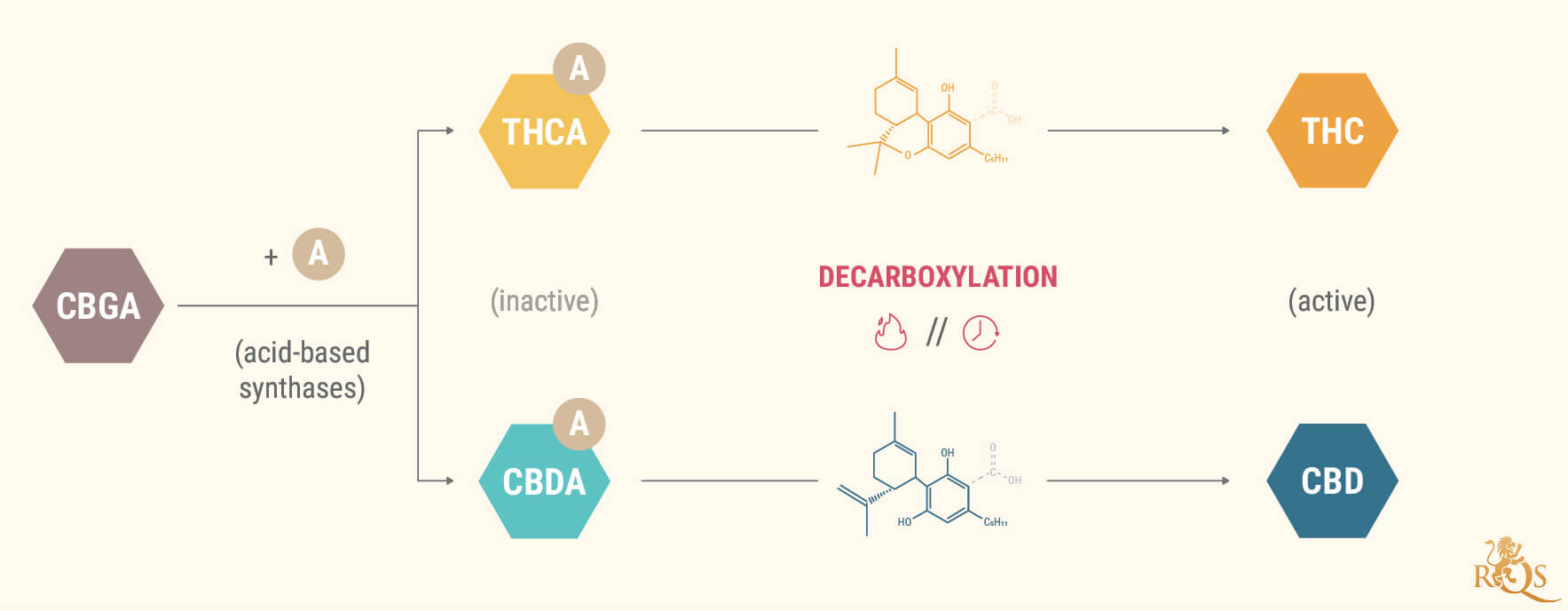
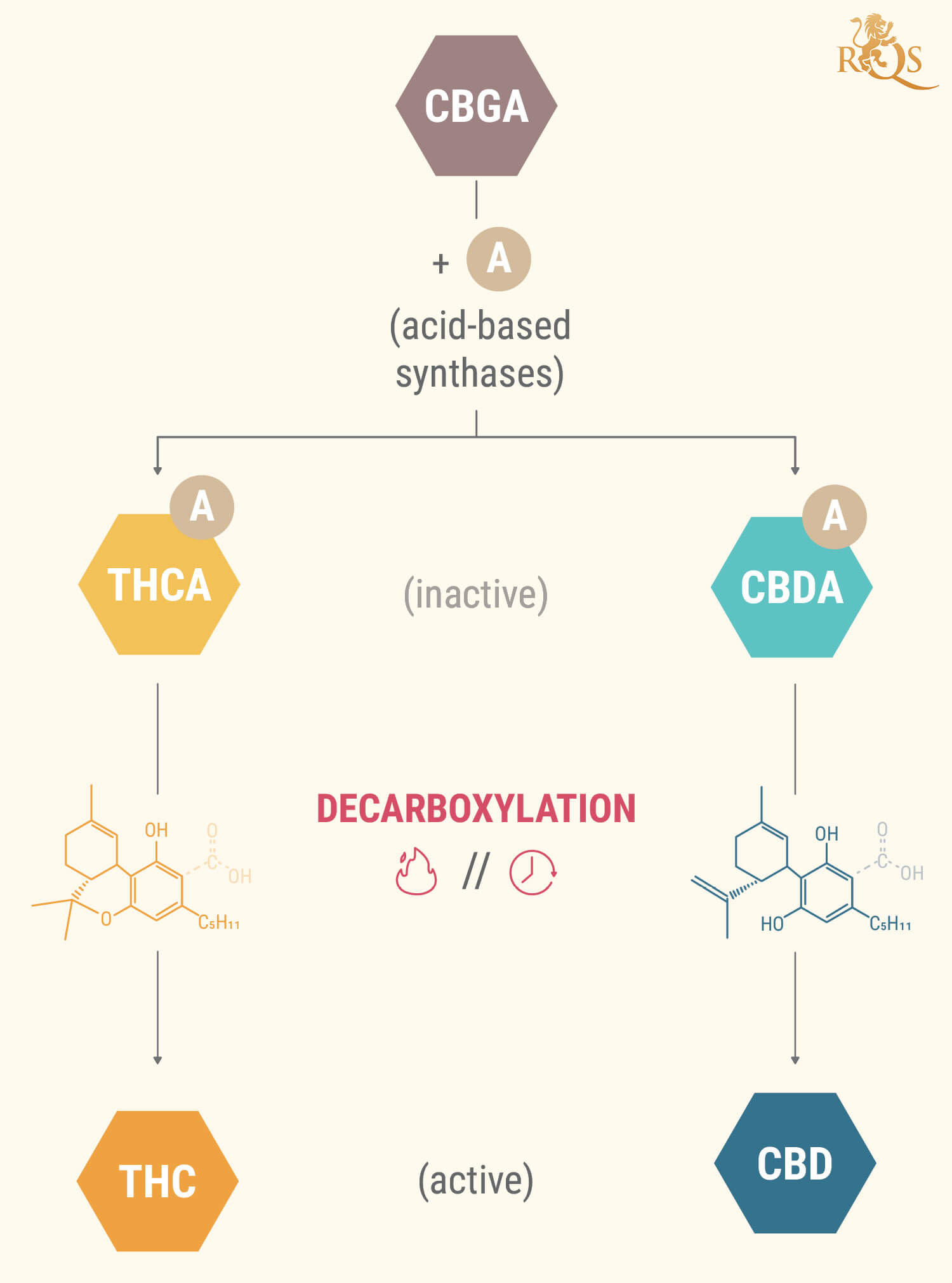
-
Advantages of Decarboxylation
Decarboxylation comes with numerous benefits. Although smoking instantly converts THCA into THC, there are benefits to decarbing your cannabis even before you smoke it.
Cannabinoid Activation
Decarboxylation activates the psychotropic elements of cannabis (THC) as well as the holistic elements (CBD, etc.). While decarbing is compulsory with smoking and vaping, edibles require slightly more extensive preparation in order to be effective.
Prevents Pathogens
Decarboxylation by heating also offers protective effects. Although cannabis flowers are usually much safer at the end of the growing cycle, pathogens can still attack buds while in storage. The heating that takes place during decarboxylation helps to remove moisture from cannabis flowers, minimising the chance of microbial pathogens spoiling your crop.
-
Why You Need to Decarboxylate CBD Strains
Just as you need to decarb your high-THC weed to feel its effects, you’ll also benefit from doing so with your CBD flowers. During the decarboxylation process, CBDA converts to CBD. Before crafting edibles, tinctures, or oils using your CBD buds, make sure you decarb them for the best outcomes.
Decarboxylation Temperature for THC and CBD
Decarboxylation temperatures are largely the same for most major cannabinoids. As mentioned, a temperature of 110°C, sustained for 30–45 minutes, gets the job done.
Boiling Points of Cannabinoids, Terpenes, and Flavonoids
Many cannabis smokers confuse decarboxylation with vaporisation (boiling point). Although decarboxylation naturally occurs when vaping, the boiling point of various cannabinoids, terpenes, and flavonoids can differ dramatically depending on the volatility of the phytochemical in question.
Check out the recommended temperature settings below when you feel like vaping your cannabis.
-
Cannabinoids
Cannabinoids vaporise at different temperatures, which means vapes with precise settings can target specific cannabinoids. Alter the temperature depending on what kind of strain you’re smoking—you’ll find different settings work better for high-THC vs high-CBD buds.
| THC | 157°C | |||
| CBD | 160–180°C |
| THC | 157°C |
| CBD | 160–180°C |
-
Terpenes
Terpenes underpin the delicious and unique flavours of each cannabis strain. Plus, these molecules synergise with cannabinoids to amplify their effects.
| Caryophyllene | 119°C | Limonene | 177°C | |
| Myrcene | 160–180°C | Linalool | 198°C | |
| Cineole | 176°C | Terpineol | 218°C |
| Caryophyllene | 119°C |
| Myrcene | 166–168°C |
| Cineole | 176°C |
| Limonene | 177°C |
| Linalool | 198°C |
| Terpineol | 218°C |
-
Flavonoids
Flavonoids also complement the complex phytochemistry of cannabis. These molecules are associated with antioxidant effects, among others. Some of them occur all throughout the plant kingdom, whereas others are unique to cannabis.
| Apigenin | 178°C | |||
| Cannflavin A | 182°C | |||
| Quercetin | 250°C |
| Apigenin | 178°C |
| Cannflavin A | 182°C |
| Quercetin | 250°C |
Decarboxylating Kief and Concentrates
Kief and cannabis concentrates offer a more potent experience than flowers alone. Growers usually collect kief using grinders or sifting trays, meaning the trichomes aren’t exposed to high temperatures during the process. Additionally, some concentrate preparation methods don’t reach the point of decarboxylation.
To ensure maximum potency, we recommend using the same procedure detailed above to decarb your cannabis buds/kief before making these products.
How To Decarboxylate Cannabis
For smokers and vapers, decarboxylation happens naturally as a result of the toking process. Although much less refined than the methods below, igniting your weed with a flame decarbs the cannabinoids and terpenes immediately, allowing you to quickly suck in and benefit from the effects. However, the excessive heat produced from this method is known to “kill off” some of these volatile molecules. Vaporising is a bit more controlled; devices are heated up to activate THC and other cannabinoids and terpenes right around their boiling points, allowing for a nearly full dose of each compound.
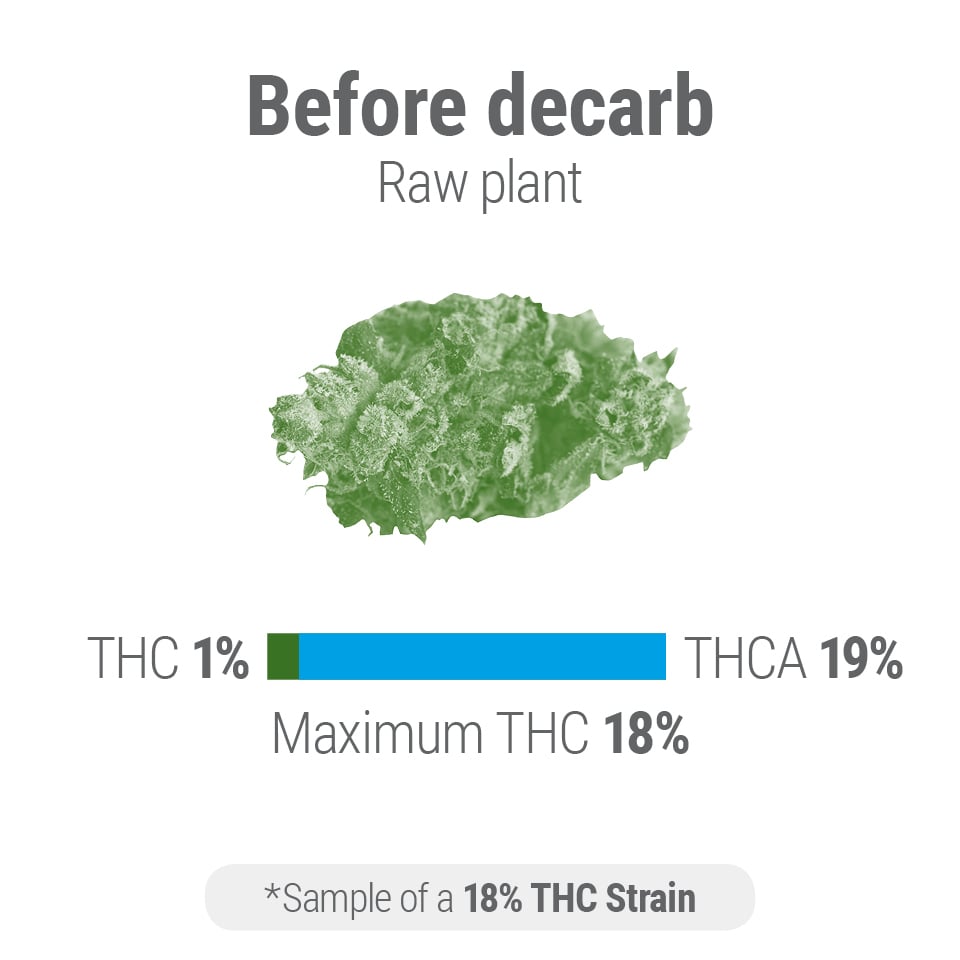
-
Oven Method
The most common method of decarboxylating cannabis, especially when making edibles, is simply “baking” it in the oven. There are a few steps involved in this method:
1. Grind up your cannabis until it is even enough to smoothly spread over a thin surface.
2. Line a baking tray with a sheet of parchment or baking paper.
3. Pour your ground cannabis over the sheet, making sure to evenly spread it out.
4. Preheat an oven to 115℃ and place the tray inside for approximately 45 minutes, stirring the cannabis about halfway through.
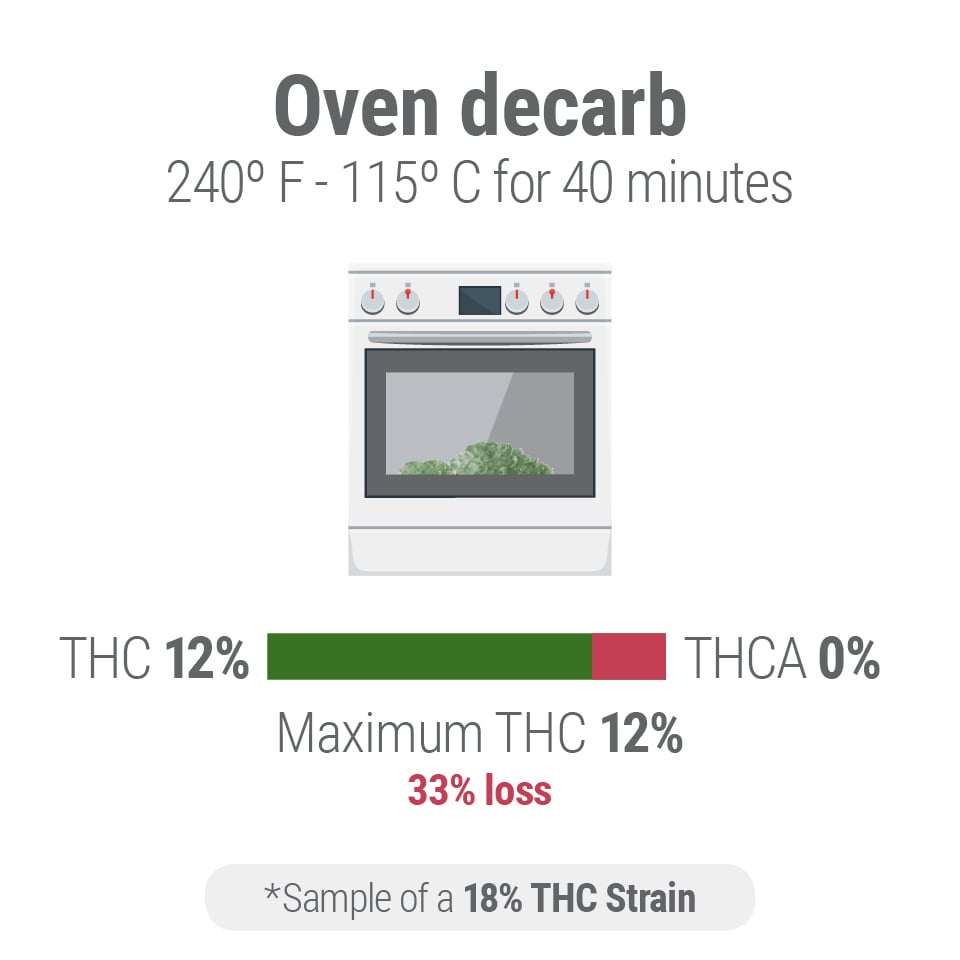
It is important to be mindful of your oven’s temperature during this process. Cooking your buds at a higher temperature may seem like it would get the job done quicker, but it will most likely just degrade the cannabinoids and terpenes, making it potentially unusable. Cooking it at a lower temperature for a longer period of time is generally considered to be the safest and most effective method of decarboxylating cannabis.
While this is the most commonly used method (and many would say the easiest), there are several other ways to decarboxylate marijuana.
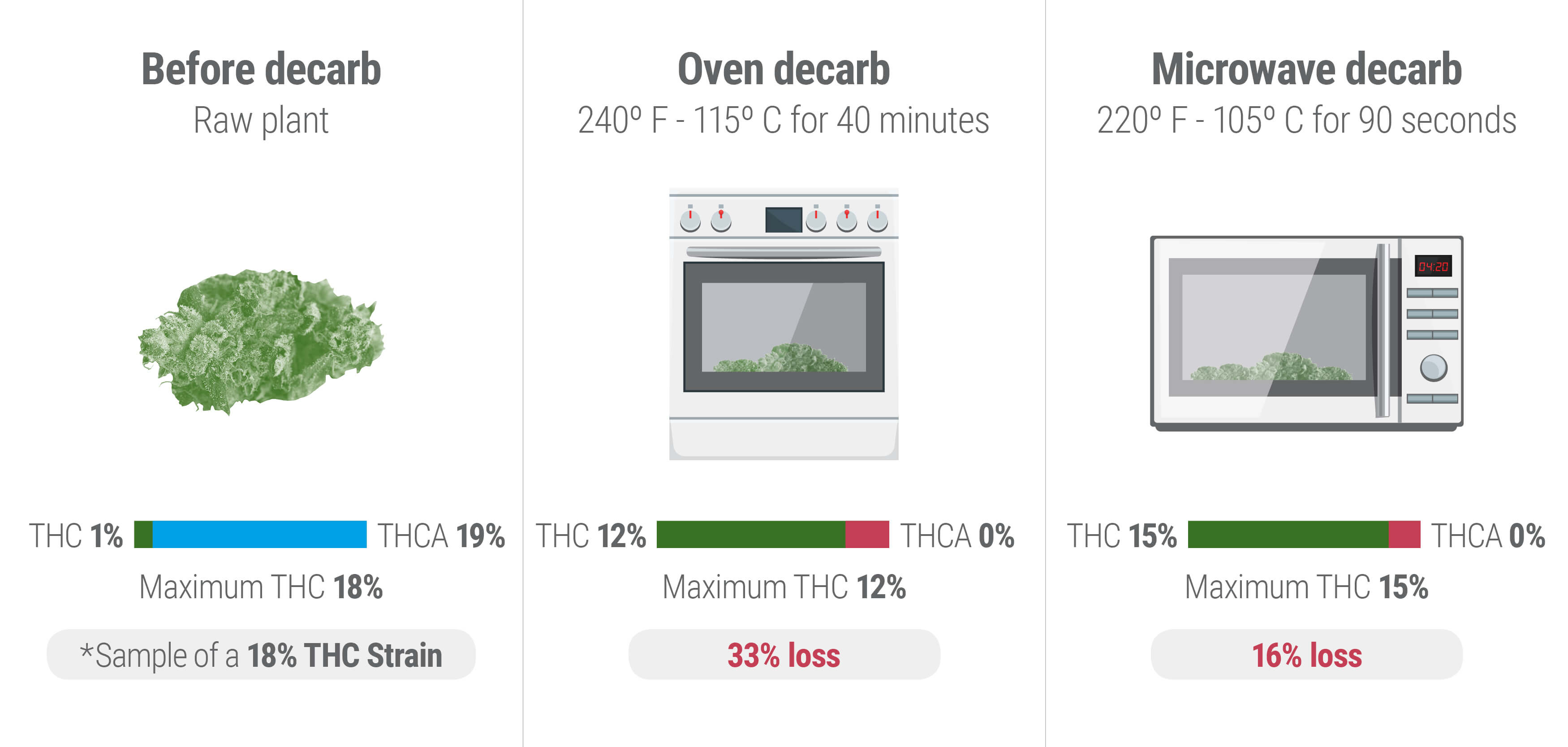
-
Microwave Method
If you don’t have 45 minutes to bake your weed in the oven, this method is perfect. While it's a little more hands-on, you can use your trusty old microwave to decarb your cannabis in just a few minutes. Here’s how:
1. Like the previous methods, grind your weed to a medium consistency. Place it in a microwave-safe bowl or tray.
2. Microwave on HIGH for roughly 90 seconds.
3. Take out your weed and smell it. It should smell pungent, but not burnt. If it’s not there yet, give it a stir and place it back in the microwave for another 60–90 seconds.
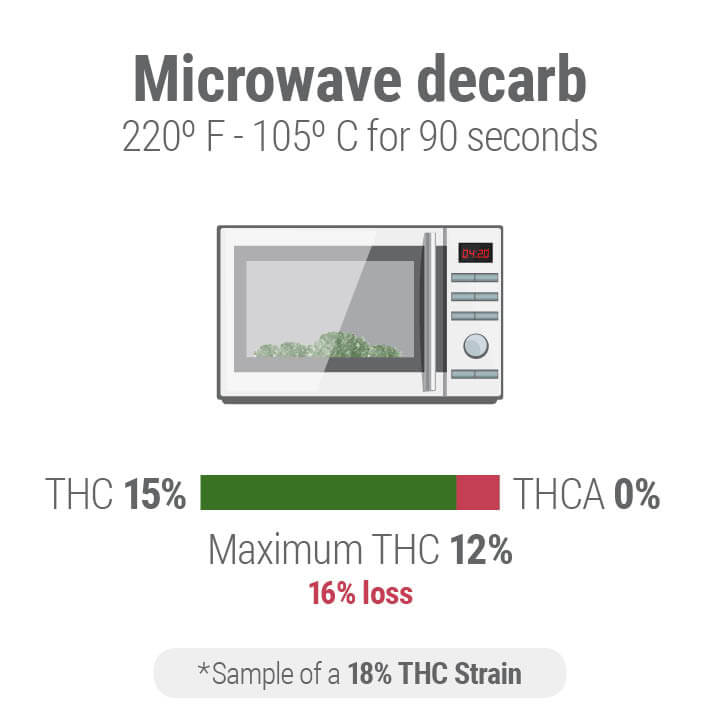
Microwaving cannabis is a little trickier than using an oven, as you don’t have any control over the temperature. Plus, microwaves vary a lot, so you’ll have to play things by ear depending on the make and model you’ve got at home.
If you’re worried about burning your weed using this method, consider using a lower microwave setting and cooking your bud a little longer.
Always keep an eye on your bud to ensure it's not burning, and use your nose to tell whether it’s been decarbed properly.
Whichever way you choose to decarboxylate your weed, remember: low and slow. Using high temperatures to rapidly heat your cannabis risks burning both cannabinoids and terpenes, which will ruin the potency and aroma of your weed. Stick to lower temperatures and take your time, and you'll end up with perfectly activated weed ready to use in any of your favourite recipes.
-
Sous-vide Method
This method is arguably our second favourite method for decarboxylating cannabis after the oven method. Because water boils at 100℃, it's literally impossible to burn your weed using this method. Plus, because you’ll be using a thermometer, you’ll also have really close control over your temperature to ensure you activate all the cannabinoids in your bud.
Here’s how to decarb your weed using sous-vide:
1. Grind your bud to a medium consistency, place it in a sous-vide bag, and vacuum-seal it.
2. If you have a sous-vide precision cooker, set it up to cook at 95℃. Place your bag in the cooker and cook it for roughly 1 hour. If you don’t have a sous-vide cooker, fill a saucepan with water and bring to a boil over high heat.
3. Once boiling, bring down the heat and use a thermometer to keep your water temperature at 95–100℃.
4. Place your vacuum-sealed bag of weed in the water and cook for approximately 60 minutes.
When using sous-vide, patience is key. This method takes notably longer than the others on this list, but the results are really consistent.
-
Natural Method
It’s worth noting that cannabis naturally decarboxylates over time if left alone. Its exposure to the elements is enough to gradually turn THCA into THC, and THC into the cannabinoid CBN. However, this process is incredibly lengthy, so heat will almost certainly be necessary in order to push it along. Whichever method you choose, decarboxylation is essential to “unlocking” the psychotropic power of our illustrious THC.


























